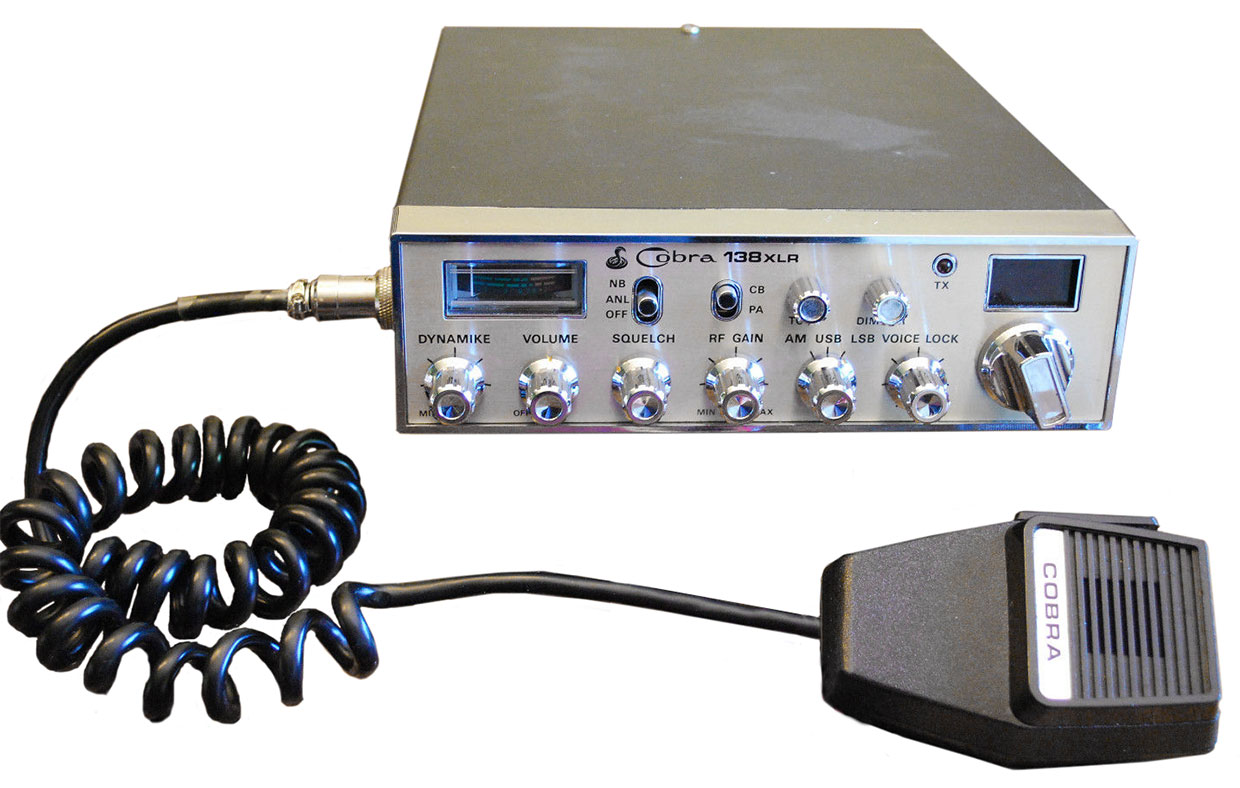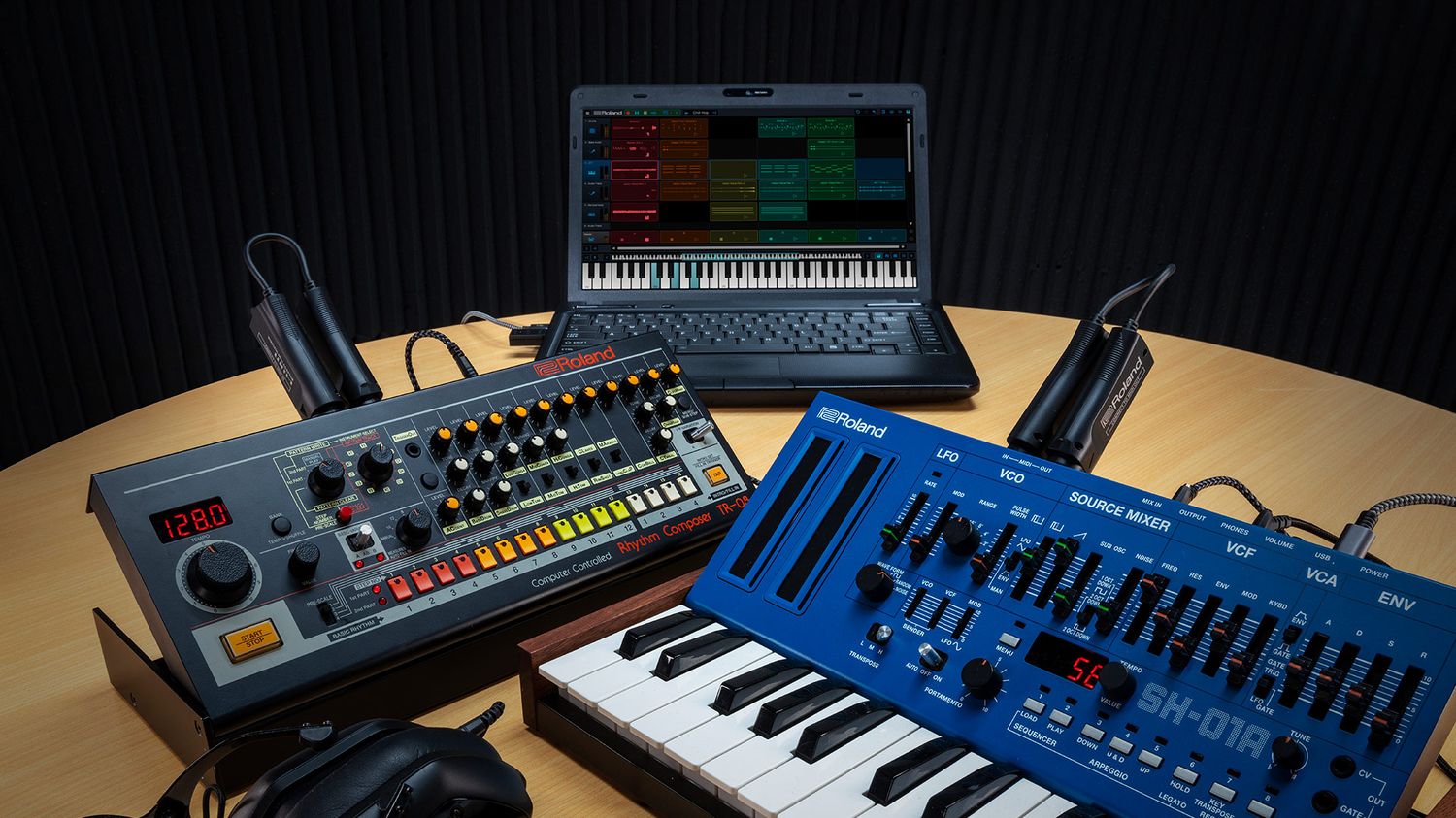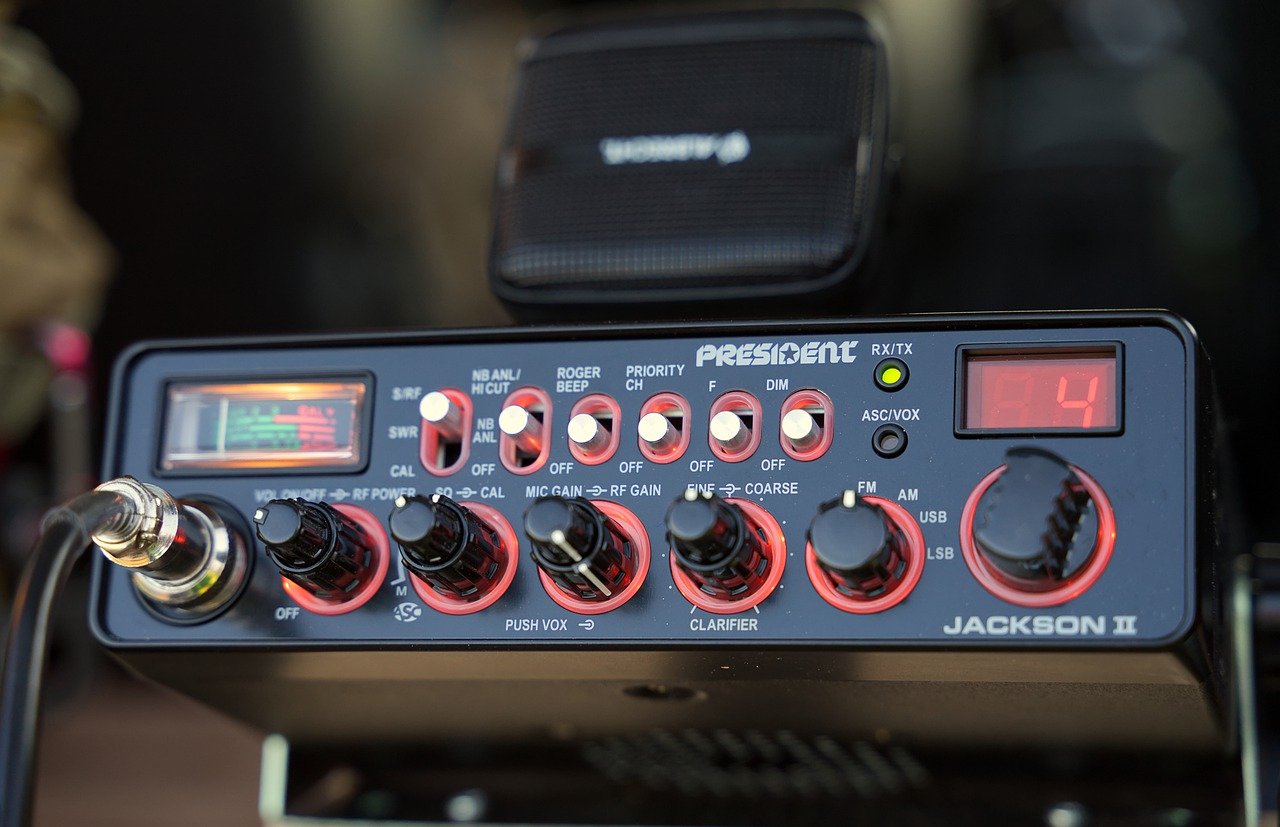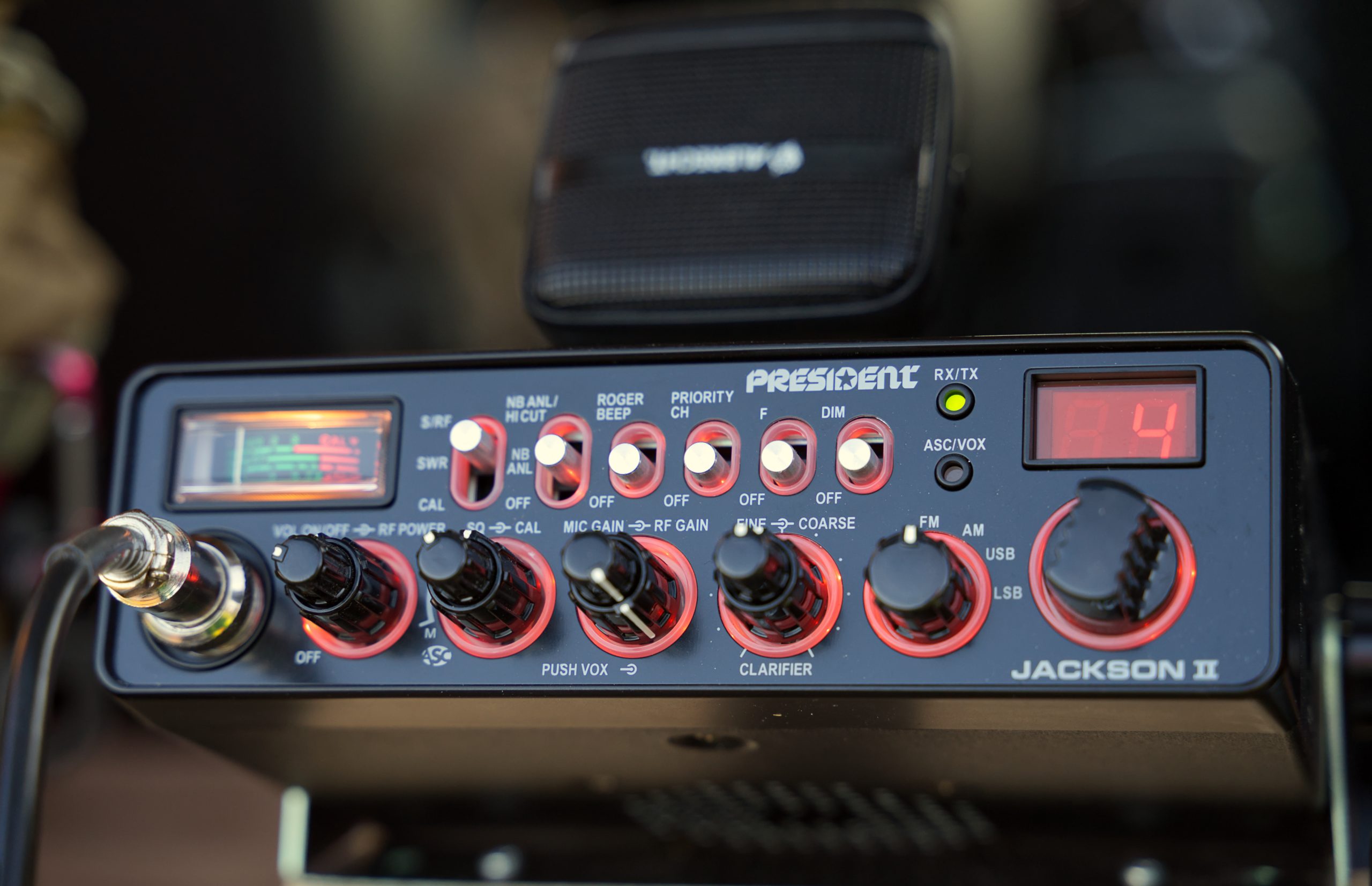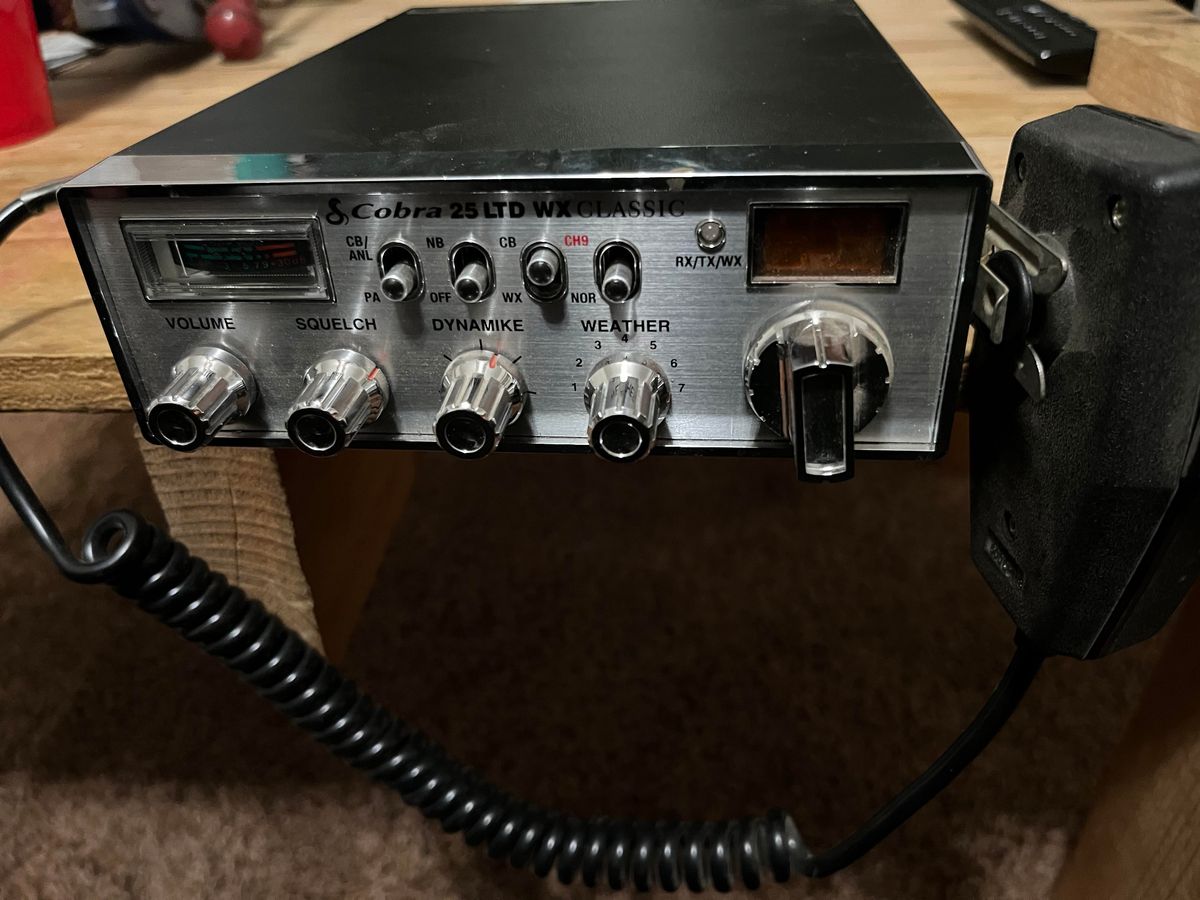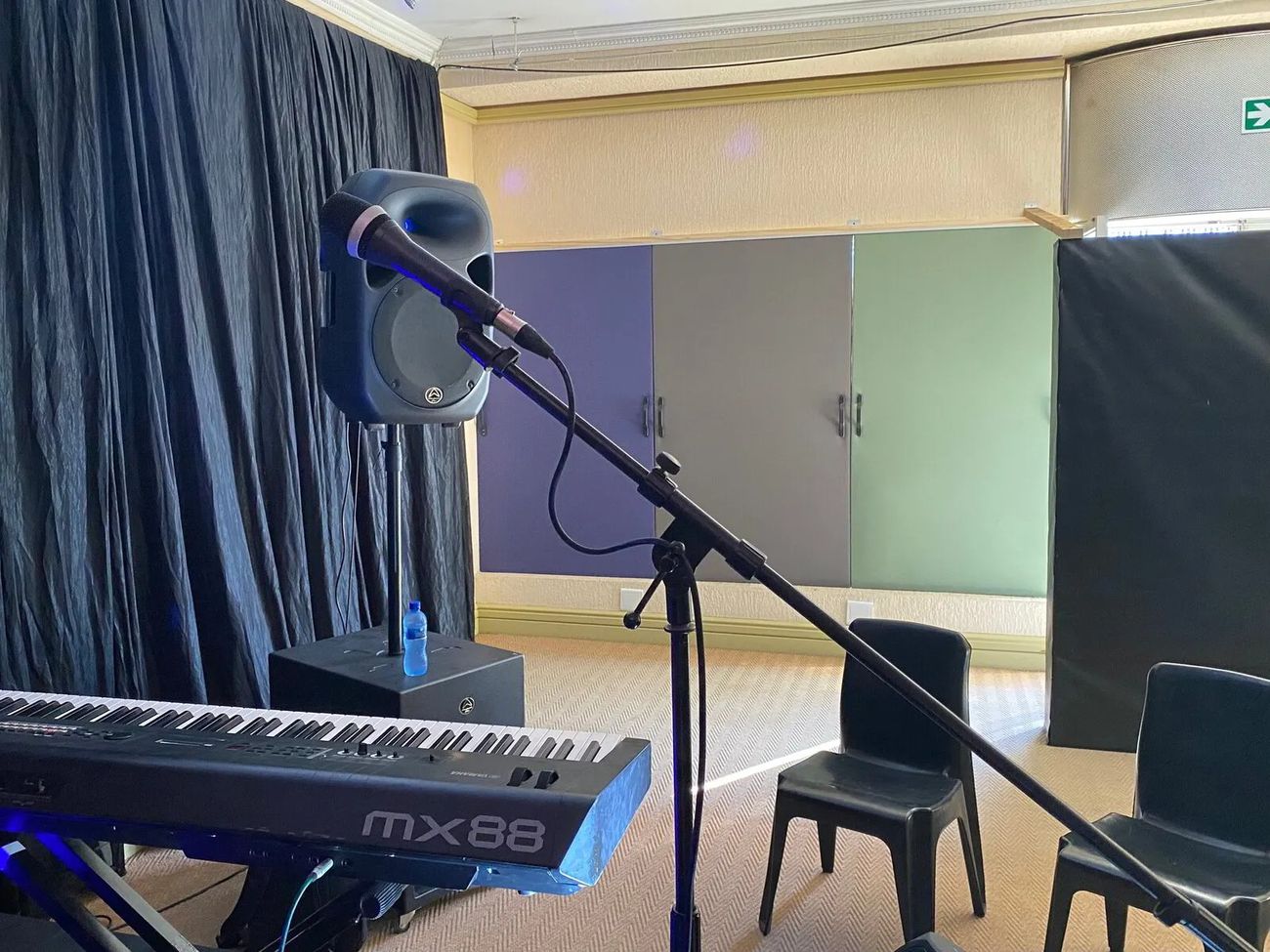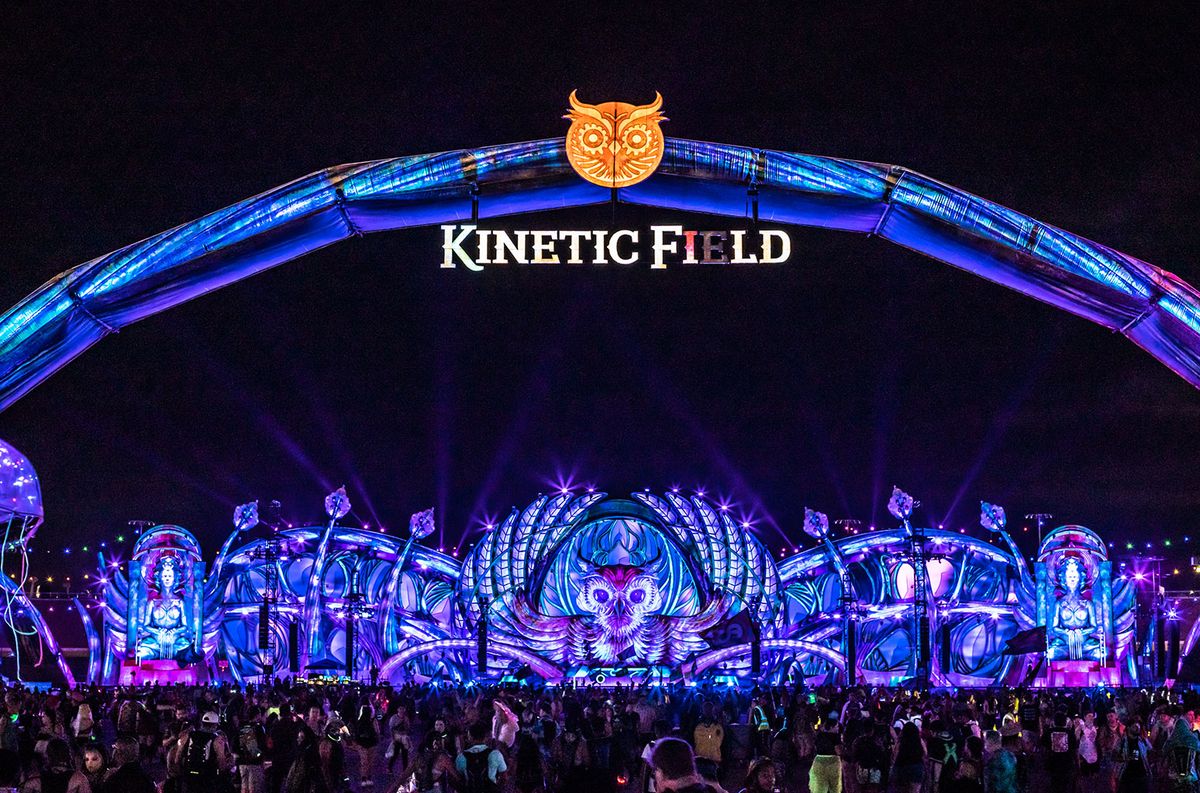Home>Devices & Equipment>Radio>What Does CB Stand For In CB Radio
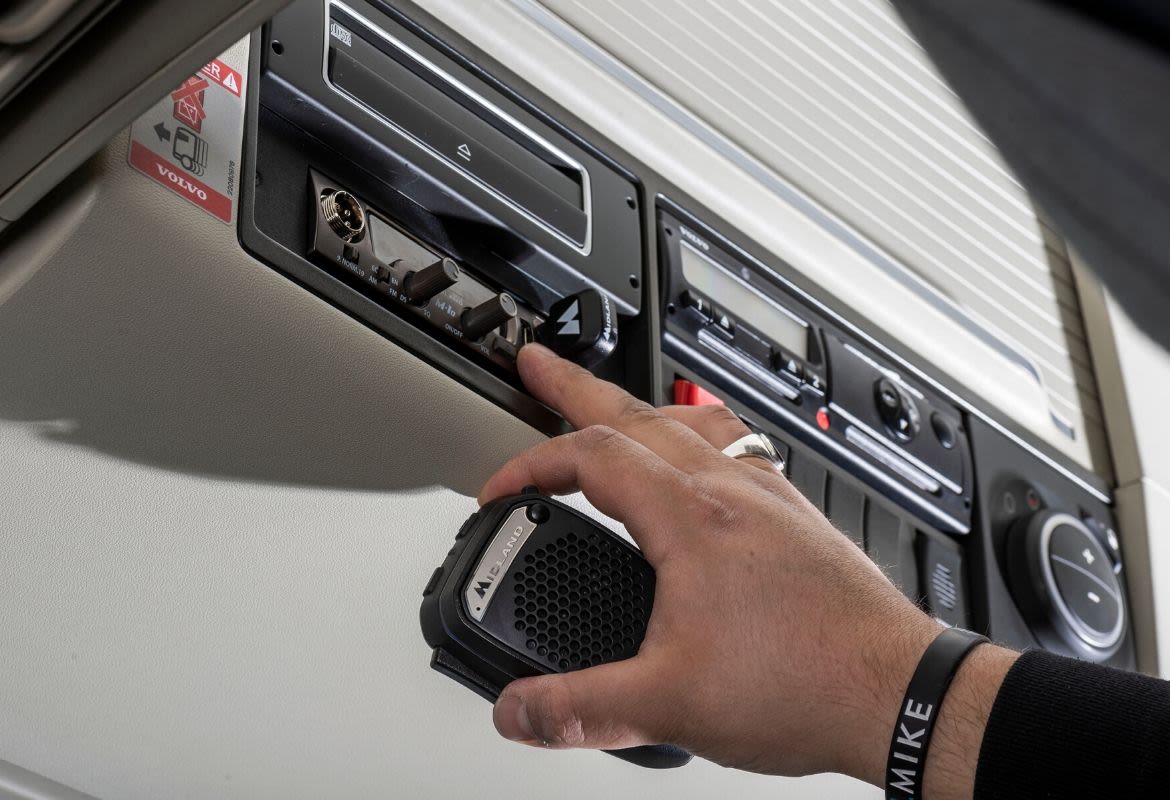

Radio
What Does CB Stand For In CB Radio
Modified: January 22, 2024
Discover what CB stands for in CB radio and how it revolutionizes communication with our range of high-quality radios. Enhance your radio experience today!
(Many of the links in this article redirect to a specific reviewed product. Your purchase of these products through affiliate links helps to generate commission for AudioLover.com, at no extra cost. Learn more)
Table of Contents
Introduction
Welcome to the world of CB radio, where communication meets exploration. CB radios have been a staple in communication for decades, allowing users to connect with each other over short distances. Whether you’re a truck driver, an outdoor enthusiast, or just a curious individual, understanding CB radio basics and terminology can help you navigate this fascinating realm.
In this article, we will delve into the world of CB radios, exploring their history, evolution, regulations, and benefits. But before we dive into the details, let’s start with the fundamentals.
CB radio, short for Citizens Band radio, is a two-way communication system that operates on specific frequencies within the 27 MHz band. It gained popularity in the 1970s and offered a means for individuals to communicate with others in their vicinity. Unlike other radio systems, CB radios are designed for personal use and do not require a license to operate.
Understanding CB radio terminology is essential to grasp the intricacies of this communication medium. From call signs and channels to slang and jargon, CB radio enthusiasts have developed a unique language that adds flavor and identity to their conversations.
So, what does CB stand for? CB stands for Citizens Band, referring to the designated frequency range available for public use. This range, from 26.965 MHz to 27.405 MHz, is divided into 40 channels, each with its own frequency and purpose.
Now that we have a basic understanding of CB radio and its terminology, let’s explore its fascinating history and how it has evolved over time.
CB Radio Basics
CB radios are relatively simple devices that allow for two-way communication between users within a limited range. They consist of a few key components, including a transmitter, receiver, antenna, and microphone. The transmitter converts voice or data into electrical signals, while the receiver picks up signals from other CB radios. The antenna serves as a medium to transmit and receive signals, while the microphone allows users to speak into the radio.
CB radios operate on a specific set of frequencies within the 27 MHz band, as mentioned earlier. These frequencies are divided into 40 channels, each with its distinct frequency and intended use. Channels 1 to 9 are commonly referred to as “emergency channels” and are reserved for important messages and distress signals. Channels 10 to 19 are typically used for regional communication, while channels 20 to 40 are for general conversations.
CB radios have a limited range, typically around four to six miles, depending on various factors such as terrain, weather conditions, and the quality of the equipment. This limited range makes CB radios ideal for short-distance communication, whether you’re on the road, at a campsite, or coordinating with others in a convoy.
One of the advantages of CB radios is their simplicity and ease of use. Unlike more advanced radio systems, CB radios don’t require extensive technical knowledge or licensing to operate. They are designed for personal use and are widely accessible to individuals from all walks of life.
CB radios also offer a reliable means of communication in areas where cell phone signals may be weak or unavailable. This makes them particularly useful in remote or rural regions where staying connected is essential.
While CB radios are primarily used for voice communication, some models also incorporate additional features such as weather alerts, built-in Bluetooth connectivity, and even CB-to-Smartphone integration, allowing users to expand their capabilities and stay up-to-date with the latest advancements.
Now that we have a solid understanding of CB radio basics, let’s explore the unique terminology that CB radio users employ to communicate effectively.
Understanding CB Radio Terminology
CB radio enthusiasts have developed a unique language filled with slang, codes, and jargon that adds color and efficiency to their conversations. Understanding CB radio terminology is crucial to effectively communicate and fully immerse yourself in the CB radio community. Here are some key terms you should familiarize yourself with:
- Handle: This is the term used to refer to a CB radio user’s chosen on-air name or nickname. Users often adopt creative and memorable handles to add a personal touch to their interactions.
- Breaker: When a CB radio user wants to interrupt ongoing conversations on a channel, they use the term “breaker” followed by their handle. This indicates their desire to join the conversation or relay important information.
- 10 Codes: 10 codes are a set of standardized numeric codes used to convey specific messages quickly and efficiently. For example, “10-4” is the code for “message received and understood,” while “10-20” asks for the user’s location.
- Q Codes: Similar to 10 codes, Q codes are a shorthand communication system that originated in the maritime and aviation industries. They are now commonly used in CB radio conversations. For instance, “QSL” means “I acknowledge receipt of your message.”
- Smoky: Smoky, smokey, or bear is a term used to discreetly refer to law enforcement or highway patrol officers. CB radio users often share information about the presence of law enforcement to help fellow users avoid speed traps or other potential traffic incidents.
- Rubber Duck: This term refers to the stock antenna that comes pre-installed on most CB radios. Its flexibility and resemblance to a rubber duck have earned it this nickname.
- Convoy: CB radio users sometimes form convoys, where a group of vehicles equipped with CB radios travels together. Convoys allow for easier communication, coordination, and shared information during road trips or long journeys.
- Copy: When someone says “copy,” it means they understand and acknowledge the message that has been transmitted, similar to “10-4.”
- Base Station: A base station is a fixed CB radio setup at a specific location, such as a home or office. They typically use more powerful equipment and longer-range antennas compared to handheld or mobile CB radios.
- Skip: Skip refers to a phenomenon in CB radio propagation where signals bounce off the Earth’s ionosphere, allowing communication over long distances. This atmospheric condition enables users to reach far beyond their typical range.
These are just a few examples of the terminology you may encounter in CB radio conversations. Embracing and understanding this unique language will enhance your CB radio experience and help you communicate smoothly with fellow enthusiasts.
Now that we’ve covered the basics and terminology, let’s dive into the meaning behind the term “CB” and explore the history of CB radios.
What Does CB Stand For?
CB stands for Citizens Band. It refers to a specific range of frequencies within the radio spectrum that is allocated for public use. CB radios operate within the 27 MHz band, also known as the 11-meter band, and are available for use without the need for a license.
The Citizens Band was established by the Federal Communications Commission (FCC) in the United States in the late 1940s. Initially, it was intended for business and government use. However, in the 1960s, the FCC realized the potential for personal communication within this frequency range and decided to make it available to citizens.
The goal was to provide an accessible form of communication for individuals who needed a means of communicating with each other over short distances, whether for recreation, coordination during outdoor activities, or emergency situations.
The term “CB” became synonymous with the Citizens Band and is commonly used to refer to the radios and the communication system associated with it. It has become a recognized abbreviation worldwide, often used interchangeably with “CB radio.”
Today, CB radios are widely used by a diverse range of individuals and groups. Truck drivers rely on CB radios for real-time traffic updates, coordination with other drivers, and assistance during emergencies. Outdoor enthusiasts, such as campers, RV travelers, and off-road adventurers, use CB radios to stay connected, share information, and seek assistance in remote areas.
Additionally, hobbyists and enthusiasts enjoy CB radios as a means of socializing and tapping into a vibrant community. They participate in informal chats, group activities, and even organized events, such as radio contests and “talking skip” sessions facilitated by atmospheric conditions that allow long-range communication.
CB radios have stood the test of time, remaining a reliable and accessible form of communication. Despite technological advancements and the rise of mobile phones, CB radios continue to carve out their unique place in the world of communication.
Next, let’s take a journey through the history of CB radios to understand how they have evolved over the years.
History of CB Radios
The history of CB radios can be traced back to the late 1940s when the Citizens Band was first established by the Federal Communications Commission (FCC) in the United States. Initially, the band was reserved for business and government use, primarily to facilitate communication between companies and their fleet of vehicles.
However, it wasn’t until the 1960s that the FCC recognized the potential of the Citizens Band for personal communication. As a result, the FCC opened up the 27 MHz frequency range for public use, paving the way for the development and widespread adoption of CB radios.
In the early days of CB radio, the equipment was bulky, expensive, and limited to a select few who could afford it. However, as technology advanced, CB radios became more compact, affordable, and accessible to the general public.
The 1970s witnessed a surge in the popularity of CB radios, fueled by their portrayal in movies, such as “Smokey and the Bandit,” and TV shows like “The Dukes of Hazzard.” This resulted in a CB radio craze, with millions of people purchasing and using CB radios as a means of communication.
CB radios became especially popular among truck drivers, who used them to communicate with each other on the road, share information about road conditions, and for general camaraderie. The famous phrase “breaker, breaker” became synonymous with CB radio users trying to get the attention of other users on the same channel.
During this time, CB radios developed their unique culture and language. CB radio users adopted handles, such as “Rubber Duck,” “Snowman,” or “Bandit,” to identify themselves on the airwaves. Slang terms and codes were also created to convey messages quickly and efficiently, adding a layer of identity and fun to the CB radio experience.
Despite the decline in popularity in subsequent decades, CB radios remain a mainstay in certain industries and hobbies. Truck drivers still rely on CB radios for communication, while outdoor enthusiasts and hobbyists continue to appreciate the simplicity and reliability of this form of communication.
Today, CB radios have evolved to incorporate new features such as weather alerts, AM/FM radio, and Bluetooth connectivity, expanding their capabilities and flexibility. Regardless of technological advancements, the charm and nostalgia associated with CB radios have allowed them to maintain a dedicated following even in the digital age.
Now, let’s explore how CB radio technology has evolved over the years.
Evolution of CB Radio Technology
Over the years, CB radio technology has undergone significant advancements, evolving from bulky and limited devices to more sophisticated and feature-rich communication tools. Let’s explore the key milestones in the evolution of CB radio technology:
1. Miniaturization: In the early days of CB radios, the equipment was often large, heavy, and required substantial power sources. However, with advancements in technology, manufacturers were able to miniaturize the components, resulting in more compact and portable CB radios that are easier to use and carry.
2. Increased Channel Capacity: Initially, CB radios provided 23 channels, but in 1977 the FCC expanded the channel capacity to 40. This additional bandwidth allowed for more users to communicate simultaneously and relieved congestion on individual channels.
3. Integrated Features: As technology progressed, CB radios started embracing additional features such as built-in weather alerts, allowing users to receive real-time weather updates and stay informed about severe weather conditions.
4. AM/FM Radio Integration: Some modern CB radios now come equipped with AM/FM radio functionality. This integration enables users to switch between CB communication and standard radio stations, offering more entertainment options during long drives.
5. Bluetooth Connectivity: Another recent development in CB radio technology is the inclusion of Bluetooth connectivity. This feature allows users to connect their CB radios to their smartphones, enabling hands-free communication and access to additional functionalities.
6. Improved Range and Clarity: Technological advancements have led to the development of higher-powered CB radios and improved antenna designs, resulting in extended communication range and enhanced clarity of signals, even in challenging environments.
7. Digital CB Radio: Digital CB radios, also known as Digital Mobile Radios (DMRs), have emerged as an alternative to traditional analog CB radios. DMRs offer clearer audio quality, reduced interference, and the ability to transmit data alongside voice communication.
While these advancements have enhanced the capabilities and convenience of CB radios, the core essence remains the same – providing reliable communication over short distances. CB radios continue to serve as a cost-effective and accessible communication solution for various industries, such as transportation, outdoor recreation, and emergency services.
As CB radio technology continues to evolve, it will be intriguing to see what new features and innovations will emerge, further enriching the CB radio experience for enthusiasts and users alike.
Now, let’s shift our focus to the regulations and licenses associated with CB radios.
CB Radio Regulations and Licensing
CB radios operate under specific regulations set by the Federal Communications Commission (FCC) in the United States. These regulations ensure efficient and orderly communication within the Citizens Band without requiring individual licenses.
In the United States, CB radios are subject to the following regulations:
1. Power Output: CB radios are limited to a maximum power output of 4 watts for AM signals and 12 watts for Single Sideband (SSB) modulation. This power restriction aims to maintain fair and consistent communication among users.
2. Antenna Height: The FCC also imposes a maximum antenna height for CB radios, typically limited to 20 feet above the ground or 60 feet above a structure.
3. Channel Assignments: CB radios are allowed to access 40 specific channels within the 27 MHz band. Each channel has a specific frequency and serves different purposes, from general chatting to emergency communications.
4. Equipment Certification: All CB radios sold in the United States must be certified by the FCC to ensure they meet specific technical standards for performance, emissions, and quality.
5. Interference: Users of CB radios must refrain from interfering with other radio services or electronic devices. CB radios operate on shared frequencies, and it is essential to respect the rights of other users and prevent interference with other communication systems.
While no license is required to operate a CB radio in the United States, it’s important to note that other countries may have different regulations and licensing requirements. If you plan to use CB radios outside the United States, it is advisable to research and adhere to the specific rules and regulations of the country you will be operating in.
Understanding and complying with these regulations ensures a harmonious CB radio experience for all users. It promotes responsible and respectful communication, allowing everyone to enjoy the benefits of CB radios without any unnecessary interference or disruptions.
Now that we’ve covered the regulations and licensing, let’s explore the various benefits and practical uses of CB radios.
Benefits of CB Radios
CB radios offer a range of benefits that make them a valuable communication tool in various industries and recreational activities. Let’s explore some of the advantages of using CB radios:
1. Simple and User-Friendly: CB radios are known for their simplicity and user-friendly interface. They don’t require extensive technical knowledge or licensing, making them accessible to anyone who wants to communicate over short distances.
2. Cost-Effective: CB radios are an affordable communication option compared to other devices or services. Once you purchase the radio, there are no subscription fees or per-minute charges, making them a budget-friendly choice.
3. Reliable Communication: CB radios provide reliable communication even in areas with limited or no cellular network coverage. They are particularly useful in remote locations or during natural disasters when traditional communication channels may be disrupted.
4. Real-Time Information: CB radios enable users to receive and share real-time information. Whether it’s traffic updates, weather alerts, or road conditions, CB radios allow for quick dissemination of information, keeping users informed and prepared.
5. Immediate Communication: With CB radios, communication is instant. There’s no need to dial phone numbers or wait for connections. Users can engage in direct, immediate, and simultaneous communication with multiple individuals within their vicinity.
6. Compact and Portable: CB radios have evolved to become compact and portable, making them easy to carry and install in various settings. Whether you’re a truck driver, camper, off-roader, or involved in other outdoor activities, CB radios can be easily transported and utilized wherever you go.
7. Community and Networking: CB radios foster a strong sense of community and networking among users. By joining the CB radio community, you can connect with fellow enthusiasts, participate in group activities, and engage in shared interests and conversations.
8. Emergency Communication: CB radios have played a critical role in emergency situations. They allow for immediate communication and coordination during accidents, breakdowns, or when help is needed. In remote areas or during natural disasters, CB radios can be a lifeline for communication and assistance.
These are just a few of the many benefits that CB radios offer. Whether you’re a professional driver, outdoor enthusiast, hobbyist, or someone who values reliable and accessible communication, CB radios provide a cost-effective and efficient means of staying connected.
Now, let’s explore some of the common uses of CB radios in various settings.
Common Uses of CB Radios
CB radios have a wide range of practical uses across different industries and recreational activities. Let’s explore some of the common applications of CB radios:
1. Transportation: CB radios are widely used in the transportation industry, particularly by truck drivers. They allow drivers to communicate with each other, share important information about road conditions, accidents, and traffic jams. CB radios help improve safety, coordination, and efficiency on the roads.
2. Outdoor Recreation: Whether you’re camping, hiking, or engaging in off-road adventures, CB radios are a valuable tool for outdoor enthusiasts. They enable communication within a group, ensure safety, and provide the ability to call for help in case of emergencies or other unforeseen circumstances.
3. Convoy Communication: CB radios are frequently used in convoy situations, where a group of vehicles travel together. This commonly occurs in recreational activities, such as road trips, caravans, or off-road expeditions. CB radios facilitate easy and instantaneous communication within the convoy, ensuring coordination and safety.
4. Sporting Events: CB radios have found application in sporting events, especially those involving motor vehicles or large fields. Race organizers, officials, and teams utilize CB radios to communicate important instructions, updates, and coordinate activities during events.
5. Emergency Services: CB radios can play a crucial role in emergency situations. First responders, such as police officers, firefighters, and paramedics, use CB radios to communicate with their team members on-site or during disaster response. CB radios provide reliable and instant communication when other means may be unavailable or compromised.
6. Neighborhood Watch: CB radios are sometimes utilized by neighborhood watch groups to improve security and communication within a community. These radios enable residents to report suspicious activities, share information, and coordinate efforts to maintain a safe and secure neighborhood.
7. Recreational Boating: CB radios are commonly found on recreational boats and maritime vessels. They allow boaters to communicate with nearby vessels, marinas, or emergency services. CB radios can be essential for navigation, safety, and coordination on the water.
8. Construction Sites: In the construction industry, CB radios are often used to foster communication and coordination among workers on large job sites. They facilitate quick communication between various teams, improving efficiency and ensuring a smooth workflow.
These are just a few examples of the versatile applications of CB radios. Their affordability, reliability, and ease of use make them invaluable tools for communication in various professional and recreational settings.
As technology continues to advance, and CB radios evolve, we can expect even more innovative applications and uses for this enduring form of communication.
Now, let’s conclude our exploration of CB radios.
Conclusion
CB radios have been an integral part of communication for decades, providing a reliable and accessible means of connecting with others over short distances. From their humble beginnings to the modern advancements in technology, CB radios have evolved and adapted to meet the needs of various industries and recreational activities.
With their simplicity, cost-effectiveness, and user-friendly interface, CB radios continue to serve as valuable communication tools. They offer benefits such as immediate communication, real-time information sharing, and reliable connectivity even in areas with limited cellular network coverage.
CB radios have fostered a strong sense of community, allowing users to build networks, participate in group activities, and engage in shared interests. They have proven their worth in industries such as transportation, outdoor recreation, emergency services, and more.
As technology continues to advance, CB radios are likely to incorporate even more features and capabilities. From integrated Bluetooth connectivity to digital advancements, the future of CB radios holds exciting possibilities.
Whether you’re a truck driver seeking real-time traffic updates, an outdoor enthusiast exploring remote areas, or someone looking for a reliable communication tool, CB radios offer a reliable and cost-effective solution. The charm and nostalgia associated with CB radios, coupled with their practicality in various settings, ensure their enduring popularity.
So the next time you hear the term “CB” or “Citizens Band,” you’ll know that it signifies a fascinating world of communication, camaraderie, and practicality. Embrace the unique language, join the community, and discover the joys that CB radios can bring to your life.

